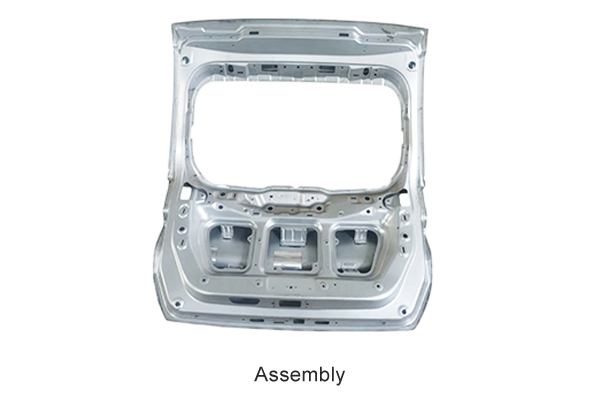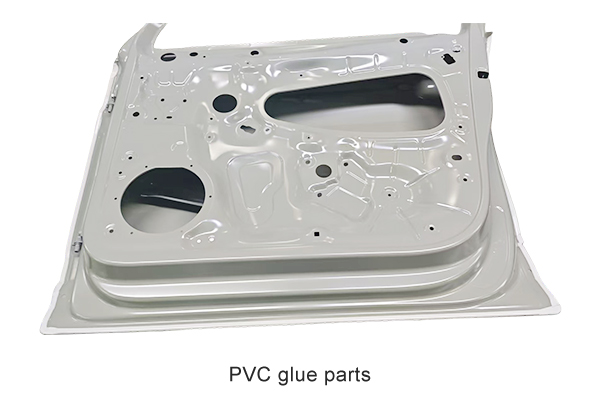In hydraulic processing of automobile sheet metal, how to reduce waste generation through mold design optimization?
Release Time : 2025-04-23
In the field of hydraulic processing of automobile sheet metal, waste generation not only causes material waste and increases production costs, but also has a negative impact on processing efficiency and the environment. As a key tool for sheet metal forming, the quality of the mold design is directly related to the amount of waste generated. Therefore, reducing waste by optimizing mold design has become an important direction for improving the efficiency of automobile sheet metal processing.
Layout design is the primary link in mold design to reduce waste. Traditional single-row and double-row layout methods often have the problem of low material utilization. The use of optimized multi-row layout, head-to-head layout or mixed layout methods can significantly improve material utilization. For example, for irregularly shaped automobile sheet metal parts, computer-aided design (CAD) software is used to perform precise layout simulation, nest the part shapes, and minimize the blank area on the sheet. At the same time, considering the specifications and dimensions of the sheet, the layout direction is reasonably planned so that the width and length of the sheet are fully utilized to avoid waste of scraps caused by unreasonable layout.
Mold structure design has an important impact on the generation of process waste. When designing the mold, a combined mold structure is used to decompose complex sheet metal parts into multiple simple molding units, and the processing is completed at different stations, which can reduce the generation of waste caused by one-time molding. In addition, the edge design of the mold is optimized, and sharp and wear-resistant edge materials are used to ensure that the sheet can be accurately separated during the stamping process, reducing burrs and tearing caused by edge wear or bluntness, thereby reducing the generation of waste. For example, in the blanking process of the mold, the edge gap is accurately calculated so that the sheet can be smoothly separated during punching to avoid excessive waste residue.
In addition to reducing waste generation, waste can also be reused through mold design. Analyze the waste generated during the processing process, and design suitable small sheet metal parts or auxiliary parts according to their shape and size. For example, larger scraps are stamped into small parts such as buckles and gaskets for automotive interiors through molds to achieve secondary use of waste. In the mold design stage, a special waste collection and processing channel is reserved to guide the waste to a specific area for subsequent recycling and reprocessing. This method not only reduces the discharge of waste, but also reduces the procurement cost of raw materials and improves the economic benefits of the enterprise.
Designing molds with universality and compatibility can reduce the frequent replacement of molds due to product replacement or upgrading, thereby reducing the generation of waste. When designing molds, the modular design concept is adopted to design different functional components of the mold into standardized modules, which are combined and adjusted according to the needs of different products. In this way, when the shape or size of the automobile sheet metal changes, only some modules need to be replaced without redesigning the entire mold, avoiding a large amount of waste caused by mold replacement. At the same time, universal molds can also improve production efficiency and reduce the manufacturing and maintenance costs of molds.
With the development of computer technology and simulation software, the mold structure can be optimized more accurately and waste generation can be reduced with the help of advanced technology in the mold design process. Finite element analysis (FEA) software is used to simulate the forming process of sheet metal parts, analyze the stress and strain distribution of the sheet metal during the hydraulic processing of automobile sheet metal, and discover possible forming defects and waste generation areas in advance, so as to optimize the mold design in a targeted manner. In addition, digital design and manufacturing (CAD/CAM) technology is used to achieve the integration of mold design, processing and assembly, improve the design accuracy and manufacturing quality of the mold, and reduce the waste caused by design errors.
In the hydraulic processing of automobile sheet metal, reducing waste generation by optimizing mold design is a systematic project, which requires comprehensive consideration from multiple aspects such as layout design, mold structure optimization, waste recycling, mold versatility and advanced technology application. Reasonable layout design can improve material utilization, optimized mold structure can reduce process waste, waste redesign realizes the secondary utilization of resources, universal compatible molds reduce replacement costs, and the assistance of advanced technology provides accurate analysis and optimization means for mold design. Through the coordinated application of these measures, it can not only effectively reduce waste generation and production costs, but also improve the quality and efficiency of automobile sheet metal processing, providing strong support for the sustainable development of the automobile manufacturing industry.








